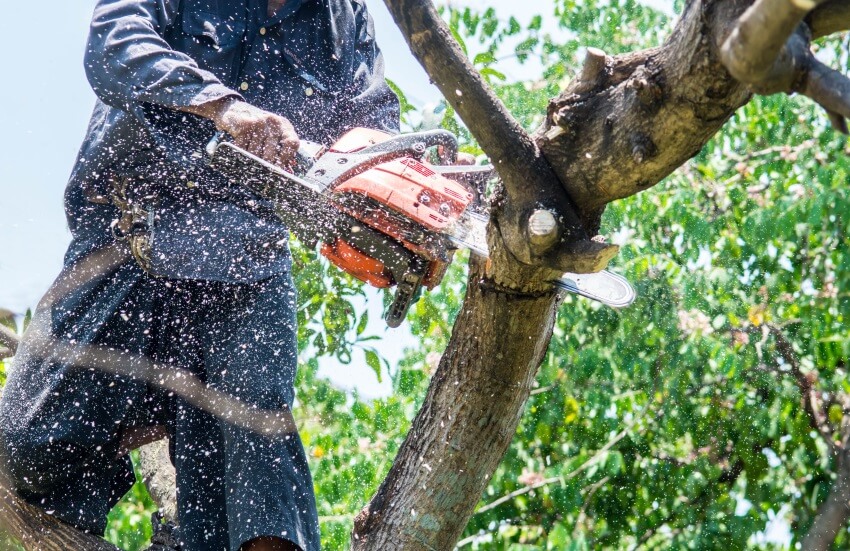Trees are an important feature of your property, offering shade, visual appeal, and enhancing the value of your residential or commercial landscaping. However, simply planting a tree is not sufficient to ensure its long-term health. Regular trimming is crucial for the well-being and appearance of trees. Due to the importance of this subject, this article will discuss the top benefits of regular tree trimming and pruning.
If you are interested in this topic, you can also read
<<Benefits Of Micro Clover Lawns >> and <<Benefits Of Weeds >> articles.
Benefits Of Tree Trimming
Tree Trimming provides a wide range of advantages for the well-being, aesthetics, and security of trees and their surrounding environment. Here are the primary benefits of tree trimming:
Health Improvement
Although the biophysical advantages of urban trees are frequently emphasized, trees also have important benefits for public health that should not be disregarded. Tree trimming is essential for preserving the health and structure of trees, as well as for guaranteeing public safety and raising the aesthetic value of trees. Plant health can be enhanced and disease transmission can be stopped by pruning unhealthy branches and thinning out dense canopies.
Disease Detection
Tree trimming plays a vital role in the early detection of tree diseases. A fundamental method for the early detection of tree diseases is visual inspection, which is often carried out to identify infected branches or fungal diseases. Professional arborists can identify signs of disease during the tree-trimming process, allowing for immediate action to prevent extensive damage to the tree.
Moreover, tree trimming contributes to the overall health of trees by eliminating dead, diseased, or damaged branches, which can hinder the spread of decay and disease. This proactive approach to tree care, which includes regular check-ups from a professional tree trimming service, is crucial in the prevention and management of tree diseases [1].
Improves Fruit Production
Trimming trees can greatly affect the production of fruit in trees that bear fruit. Pruning trees correctly promotes robust growth, and enhances the output of flowers, fruits, and the quality of the fruit by encouraging a suitable balance between growth of wood and growth of reproductive parts [2, 3].
Increases Property Value
Tree trimming and pruning can significantly increase property value by improving the overall health and aesthetics of the trees, enhancing safety, and creating a more inviting atmosphere. Proper tree maintenance, including the removal of dead, diseased, or damaged branches, promotes tree health and mitigates the risk of falling branches, minimizing property damage and personal injury.
Prevents Disease Spread
Tree trimming plays a crucial role in preventing the spread of diseases among trees. Proper pruning and trimming help maintain tree health by removing dead, diseased, or damaged branches, preventing the spread of diseases to other parts of the tree. Additionally, regular trimming allows for early detection of diseases and pests, enabling timely intervention to prevent severe damage to the tree [4].
Sanitation is also critical for preventing the spread of plant diseases, and pruning tools should be sanitized between cuts to avoid transmitting pathogens. By removing infected branches and monitoring the trees for additional symptoms, tree trimming can effectively prevent the spread of diseases and contribute to the overall health and longevity of the trees.
Reduces Pest Infestation
Tree trimming can help reduce pest infestation in several ways. Proper pruning and trimming can promote the healthy growth of trees, making them less susceptible to pest infestation. Trimming also removes dead or diseased branches, which can attract pests and serve as entry points for infestations. Additionally, by maintaining the proper distance between trees and structures, trimming can prevent pests from using tree branches as a bridge to access buildings, reducing the risk of infestation [5].
Furthermore, regular tree trimming allows for the early detection of pest infestations, enabling prompt intervention to prevent the spread of pests and minimize damage to the trees. Overall, tree trimming is an effective method for preventing and reducing pest infestation, contributing to the health and longevity of trees.
Increases Sunlight Penetration
Tree trimming increases sunlight penetration by creating a more open canopy, allowing deeper sunlight penetration and promoting better plant growth. It also facilitates better air circulation and the tree’s photosynthesis process by removing overgrown, dead, or diseased branches. Additionally, it exposes more of the tree to sunlight, enabling more leaves to undergo photosynthesis and benefiting the overall health of the tree and surrounding vegetation.
Improves Air Circulation
Tree trimming improves air circulation by thinning the canopy, allowing for better airflow and reducing the risk of disease. Thinning the canopy removes branches to open up the crown, promoting healthier and more robust tree growth.
Improved Safety
Tree trimming minimizes property damage by removing overgrown branches, reducing the risk of falling limbs during storms, and preventing branches from encroaching on structures or people. Proper tree maintenance, including regular pruning and trimming, helps maintain the structural integrity of trees, reducing the likelihood of branch failure and property damage.
Aesthetic Appeal & Landscape Design
Tree trimming can improve views by selectively removing trees to open up certain areas, reducing tree height, and shaping trees for aesthetic purposes. This practice improves landscape design by maintaining a neat, clean appearance, enhancing the overall beauty and value of the landscape, and improving the structural form of trees.
However, it is important not to remove too much of the tree, as topping or cutting trees can cause bigger problems than they solve. Crown thinning is a type of selective pruning that can be used to improve view while promoting tree health and safety.
Extends Tree Life And Growth
Tree trimming removes dead, diseased, or damaged branches, enhances sunlight penetration, and improves air circulation, which are all essential factors contributing to the tree’s long-term well-being and resilience. Infact, pruning the trees properly extends tree life, stimulates robust growth, enhances the production of flowers and fruits, boosts the overall health of the plants, and eliminates any damaged branches.
Reduces Allergens
Tree trimming reduces allergens by removing pollen-producing branches, minimizing the release of allergenic pollen from certain tree species, and helping to alleviate allergies in some individuals. This practice can contribute to a healthier outdoor environment and improved air quality for those sensitive to tree pollen [6].












I agree that by boosting safety, making a space seem more welcoming, and increasing the general health and beauty of the trees, tree trimming and pruning may dramatically raise the value of a property. In addition to promoting tree health and reducing the chance of falling branches, you explained how efficient tree management also minimizes property damage and human harm by removing dead, diseased, or damaged branches. This is great because something happened with my oak tree – it’s looking a bit worse for wear, and I’m seriously thinking about getting a tree care service. It’s this majestic oak that has been part of our backyard forever, but lately, the leaves are looking sad, and some branches seem sketchy.
I remember the first time I trimmed my trees in the backyard. What a transformation! There were so many dead branches and overgrowth that it didn’t look all that great. After the pruning though, the trees looked so beautiful, showing off their limbs. Click here for tree services.